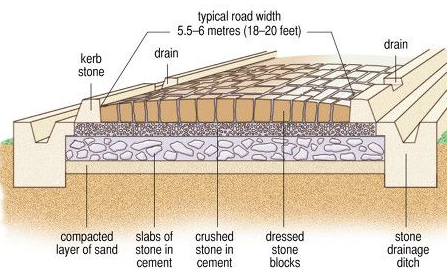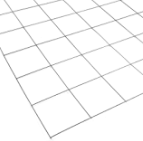CONSIDERATIONS FOR STRONG CONCRETE
- Brian Dillard

- Feb 7, 2023
- 5 min read
We are often asked for our recommendations for a concrete slab (building, parking, sidewalk, wall, etc.). Below are some of our thoughts on the options and available, each at an increased cost and a stronger slab.
SUBGRADE: In the Upstate SC area, we have a mix of red clay soil, silt, sand, and topsoil. Typically topsoil is a bad idea for subgrade below concrete. MINIMUM: Use well-compacted red clay soil as a subgrade with good positive drainage. Poorly managed stormwater can wash out the subgrade below concrete causing areas with voids underneath - the concrete will eventually crack and collapse in these areas. BEST: subgrade we see is a compacted red clay base and a 4 to 8 inches of 57 stone and/or crusher run. (57 stone is a type of gravel that is typically 1-2 inches in size. It is often used as a sub-base for concrete, as it provides a stable and well-draining foundation for the concrete to be placed on. 57 stone is known for its ability to provide a solid and stable base, even in areas with high moisture content. Crusher run is a type of gravel that is made from crushed stone. It is typically 1-2 inches in size, with a rough, angular texture. It is often used as a sub-base for concrete, as it provides good stability and allows for proper drainage. Crusher run is also known for its ability to provide a solid and stable base in areas with high moisture content.) Stone subgrade depth is an added cost, but the Roman roads lasted for a reason!

THICKNESS: The thickness of concrete determines its overall strength. Thicker concrete provides more mass and resistance to loads and stresses, while thinner concrete is more susceptible to cracking and failure. The required thickness of concrete can vary depending on the specific requirements of a project, such as the size and height of a structure or traffic, the type of loading it will be subjected to, and environmental factors such as wind, earthquakes, and freeze-thaw cycles. In general, thicker concrete is more expensive to produce, so a careful consideration of the required thickness is an important part of the design process. MINIMUM: Minimum 4" thick slabs, footings are very dependent on the building BEST: 6"-8" thick slabs
REBAR: Reinforcing steel bars, or rebar, are used to increase the tensile strength of concrete. They are placed in a grid pattern within the concrete to provide additional support and prevent cracking. The size, spacing, and arrangement of rebar can be adjusted to meet the specific requirements of a project. Commonly sold as 20' sticks. MINIMUM: No rebar is common on sidewalks and residential driveways. If rebar is used, the most common is #4 (1/2") BEST: #4 or larger rebar in a grid in the bottom 1/3 of the slab (rebar spacing is also important)

WELDED WIRE MESH (WWM) aka WELDED WIRE FABRIC (WWF) aka REMESH: Welded wire mesh is a type of reinforcement made from interlocking wire strands. It is used in concrete to provide additional tensile strength and to help control cracking. Welded wire mesh is typically less expensive than rebar and can be easier to install, as it can be rolled out over the surface of the concrete. However, it may not be as effective at providing tensile strength as rebar, so it is typically used in combination with rebar or other forms of reinforcement. Sold in rolls or panels. MINIMUM: No WWM is very common BEST: WWM in top 1/3 of the slab

FIBER REINFORCEMENT: Fiber reinforcement is a type of reinforcement made from synthetic or natural fibers that are added to the concrete mix. The fibers improve the concrete's toughness and help to prevent cracking. Different types of fibers, including steel, polymer, and glass, can be used depending on the specific requirements of the project. Fiber reinforcement can be an effective alternative to rebar or welded wire mesh, as it can provide similar strength benefits at a lower cost. However, it may not be as effective as rebar in high-stress areas, and the fibers can sometimes become exposed on the surface of the concrete, leading to aesthetic concerns. MINIMUM: No fiber reinforcement is very common BEST: We recommend fiber on applications where surface finish is not important
CURING: Concrete curing time is an important factor in determining the strength and durability of a concrete slab. The curing time can vary depending on various factors such as the type of concrete mixture, the temperature, and the humidity. Curing can be sped up by adding calcium, using hot water, hot air temperatures, and applying sealers. Curing can be slowed down by adding retarder, using cold water, and cold air temperatures. Day 1 to 7: During this period, concrete should be kept moist and protected from direct sunlight and wind to ensure proper hydration and curing. Day 7 to 28: Concrete strength increases significantly during this time and reaches about 70% of its ultimate strength. Day 28 to 56: Concrete strength continues to increase and reaches about 90% of its ultimate strength. Day 56 to 90: Concrete strength continues to increase and reaches about 95-100% of its ultimate strength.
CONCRETE JOINTS: Joints are intentional breaks or spaces between concrete elements in a structure, which are designed to control cracking and prevent structural damage. There are several types of joints in concrete, including: Construction joints: These joints occur where concrete is poured in separate stages and are used to separate concrete that is placed at different times. Expansion joints: These joints are used to accommodate the thermal expansion and contraction of concrete due to temperature changes. Contraction joints: These joints are used to control cracking caused by the shrinkage of concrete during curing. Isolation joints: These joints are used to separate different concrete elements and prevent the transfer of stresses and strains. Control joints: These joints are used to control the location and size of cracks in concrete and are typically placed at regular intervals in the concrete. Slab joints: These joints are used to separate concrete slabs from each other and prevent cracking. Dowel joints: These joints are used to transfer loads across joints and are typically made by inserting metal rods into the concrete. The type of joint used will depend on the specific application, the design requirements, and the properties of the concrete mixture used. It's important to consult with a structural engineer and follow industry standards to ensure proper joint placement and design.
AIR: Air-entrained concrete is a type of concrete that contains small air bubbles throughout the mixture. The air bubbles improve the freeze-thaw resistance and durability of the concrete, making it suitable for use in harsh climates or environments. The use of air in concrete is typically used on exterior slabs.
CONTACT US FOR MORE INFORMATION!



Comments